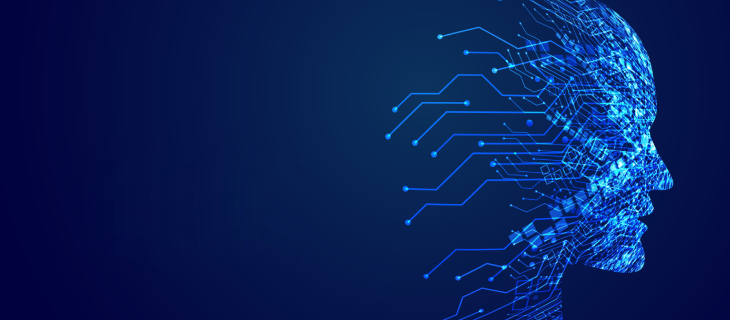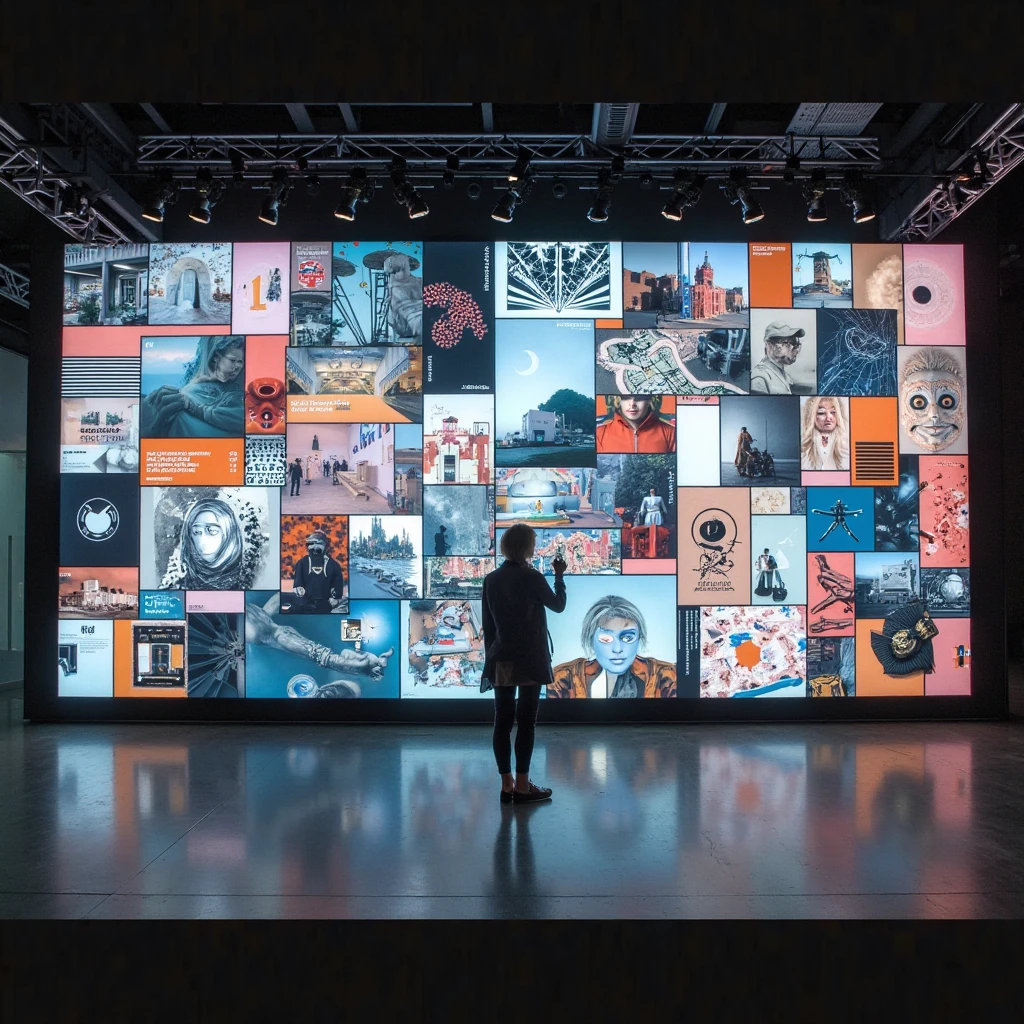Moodboards have long been a designer’s secret weapon — a collage of inspiration that sets the tone for any creative project. But creating them used to take hours of collecting images, cutting, pasting, arranging.
Now? You just type what’s in your head.
Thanks to generative AI, designers can build fully visualized moodboards with nothing but a few lines of text. From aesthetic exploration to brand brainstorming, AI moodboards are becoming essential tools in every creative workflow.
In this post, we’ll explore how AI is revolutionizing moodboarding, how to write better prompts, the best tools to use, and how designers, marketers, and agencies are using them to save time, spark creativity, and impress clients.
What Is an AI Moodboard?
An AI moodboard is a collage of images generated by artificial intelligence tools (like DALL·E, Midjourney, or Firefly) based on descriptive text prompts. Instead of manually sourcing images from Pinterest or stock libraries, designers can now input a sentence like:
“Futuristic fashion, neon lights, urban Tokyo streets at night, cyberpunk mood”
And within seconds, the AI generates a set of images that perfectly match that aesthetic.
Unlike traditional moodboards, AI-generated ones are:
- Custom-tailored to your vision
- Faster to create (seconds vs. hours)
- Unlimited in possibility — no more scouring Pinterest
- Unique — visuals you won’t find anywhere else
Why Designers Are Turning to AI Moodboards
Here’s why AI moodboards are becoming the go-to creative weapon:
✅ Speed
Creating moodboards traditionally takes hours. AI cuts it down to minutes.
✅ Creative Exploration
Trying to define a vibe like “cozy-retro-apocalypse”? AI can visualize that even when stock photos fall short.
✅ Client Collaboration
AI moodboards help clients see ideas instantly, reducing back-and-forth and miscommunication.
✅ Cost-Effective
No need to buy expensive images or waste time searching. AI delivers on-demand inspiration.
✅ Unlimited Iterations
Change a word, get a new result. Designers can explore dozens of directions fast.
How Text Prompts Power Visual Brainstorming
At the core of AI moodboarding lies the text prompt — your creative brief in a sentence.
Think of it like this:
Text Prompt = Moodboard Recipe
A strong prompt describes:
- The aesthetic or style
- The colors or mood
- The subject or setting
- Optional: camera angles, composition, lighting
Let’s look at an example prompt:
“Vintage Paris café, soft pastel tones, sunlight hitting wooden tables, romantic and nostalgic vibe, film grain texture.”
What the AI does:
- Generates cohesive imagery that captures that vibe
- Combines lighting, objects, and setting into a single artistic output
- Delivers images that align with your project mood
Tools to Create AI Moodboards from Text
Several tools make it easy to generate stunning AI visuals from simple prompts. Here’s a roundup:
🧠 Midjourney
- Known for cinematic, artistic output
- Runs on Discord
- Ideal for stylized moodboards
🧠 DALL·E (via ChatGPT or OpenAI API)
- Great for more literal interpretations
- Offers inpainting for editing specific image areas
🧠 Adobe Firefly
- Integrated with Adobe tools
- Great for brand-safe commercial use
🧠 Canva AI / Magic Media
- Easy drag-and-drop interface
- Ideal for non-designers or quick concept boards
🧠 Runway ML / Sora (for motion moodboards)
- Great for video concepting and animated moodboards
Prompt Engineering for Moodboards: Tips & Templates
Here’s how to write high-performing prompts for AI moodboards:
🎯 Be Specific, but Balanced
Too vague = generic results. Too detailed = confusing visuals. Aim for clear themes.
🧩 Include Aesthetic Keywords
Use words like:
- Minimalist, rustic, vaporwave, brutalist, Art Deco, retro-futuristic, editorial, surreal
🎨 Mention Mood and Colors
Examples:
- Moody and dark
- Soft pastels
- Sunset glow
- High contrast, neon
🖼 Add Composition or Photography Style
- Flat lay
- Cinematic wide shot
- Macro lens detail
- Editorial fashion photography
Prompt Templates
✦ Branding Moodboard
“Luxury skincare branding, minimalist design, white marble background, gold accents, serene and clean aesthetic, overhead product shots”
✦ UI/UX Moodboard
“Modern mobile app interface, soft gradients, clean typography, user-friendly UX, pastel palette, futuristic but accessible”
✦ Interior Design Moodboard
“Scandinavian living room, wooden textures, neutral tones, cozy lighting, modern furniture, hygge vibe”
Types of Moodboards You Can Generate with AI
AI moodboards aren’t one-size-fits-all. Here are some types to experiment with:
📸 Visual Style Moodboards
Showcase art direction, color palette, and composition.
🎯 Brand Moodboards
Communicate tone, typography, logo style, and lifestyle imagery.
💄 Product Moodboards
Highlight packaging aesthetics, use-case scenarios, product placement.
🖥 UI Moodboards
Help set the visual direction for websites and apps.
🏡 Interior/Architecture Moodboards
Visualize spatial concepts, lighting, textures, and furniture.
🎞 Motion/Story Moodboards
Plan out key scenes or video moods using image sequences.
Real-World Examples: AI Moodboards in Action
🧪 Example 1: Rebranding for a Wellness App
Prompt:
“Peaceful yoga retreat, morning mist, mountains, minimalist design, green and white color scheme, fresh and calming vibe”
Generated moodboard:
- Aesthetic images of nature and wellness
- Matching typography and branding shots
- Helped client align on a clean visual identity
💼 Example 2: Pitch Deck for a Luxury Fashion Line
Prompt:
“High-end fashion editorial, black-and-white photography, moody lighting, timeless elegance, upscale boutique atmosphere”
Result:
- A cohesive board with 6-8 on-brand visuals
- Drove home the brand’s tone and made the pitch more persuasive
Collaborative Workflows: Teams + AI = Faster Ideation
AI moodboards aren’t just for solo designers. Teams are using them to:
- Start client projects faster
- Align creative direction before development
- Test multiple directions in minutes
- Simplify communication between marketers, designers, and stakeholders
Pro tip: Use collaborative boards (like Figma, Milanote, or Notion) to drop in AI-generated visuals and gather feedback in real time.
Common Mistakes and How to Avoid Them
Here are a few pitfalls new users fall into when using AI moodboards:
❌ Overcomplicating Prompts
Long, confusing prompts can create messy images. Stick to clear themes.
❌ Forgetting Consistency
Random styles = confusing moodboard. Align colors, composition, and visual tone.
❌ Skipping Human Touch
Always refine — AI is a tool, not the final step.
❌ Misusing AI Assets
Avoid using AI visuals as final work unless clearly disclosed or permitted by license.
The Future of AI Moodboarding
We’re just getting started. Expect to see:
- Real-time collaborative AI board tools
- Voice-to-moodboard creation
- Adaptive moodboards that evolve with project input
- 3D and video-based moodboards for immersive design planning
Designers who master this early will own the creative brief of tomorrow.
Final Thoughts
AI moodboards are more than a shortcut — they’re a superpower for modern creatives.
They allow you to:
- Visualize ideas instantly
- Explore aesthetics with freedom
- Collaborate better with clients and teams
- Bring imagination to life without technical barriers
Whether you’re designing a brand, pitching a campaign, or simply stuck in creative limbo — a well-crafted prompt and the right AI tool can unlock your next big idea.
20 Text Prompts for Stunning AI Moodboards 💫
Here are 20 plug-and-play prompts you can use right now:
- “Modern minimalist office, white and wood, sunlight, productivity aesthetic”
- “Dark academia fashion, vintage books, candlelight, autumn tones”
- “Futuristic tech product, matte black, neon lights, cyberpunk style”
- “Luxury perfume brand, glass bottles, marble background, gold accents”
- “Desert festival style, boho fashion, sunset lighting, carefree vibe”
- “Scandinavian bedroom, cozy textures, neutral palette, ambient lighting”
- “Vintage diner, red leather booths, 1950s America, cinematic lighting”
- “Kawaii pastel stationery, pink and mint, flat lay composition”
- “High-concept beauty product shoot, surreal elements, editorial lighting”
- “Tropical vacation mood, beaches, cocktails, sunlight flares”
- “Brutalist architecture, grayscale, minimal shadows, urban setting”
- “Gothic elegance, dark florals, lace textures, candlelight”
- “Playful Gen Z fashion, bold colors, chunky accessories, Y2K vibes”
- “Clean fintech UI, blue gradient backgrounds, modern typography”
- “Eco-conscious branding, plants, earthy tones, recycled textures”
- “Athleisure photoshoot, dynamic poses, studio lighting”
- “Children’s book illustration, pastel tones, magical forest”
- “High-tech smart home, ambient lights, minimal interiors”
- “Cinematic movie poster style, dramatic shadows, bold type”
- “Dreamy cloudscape, surreal fantasy, soft glow, floating islands”








